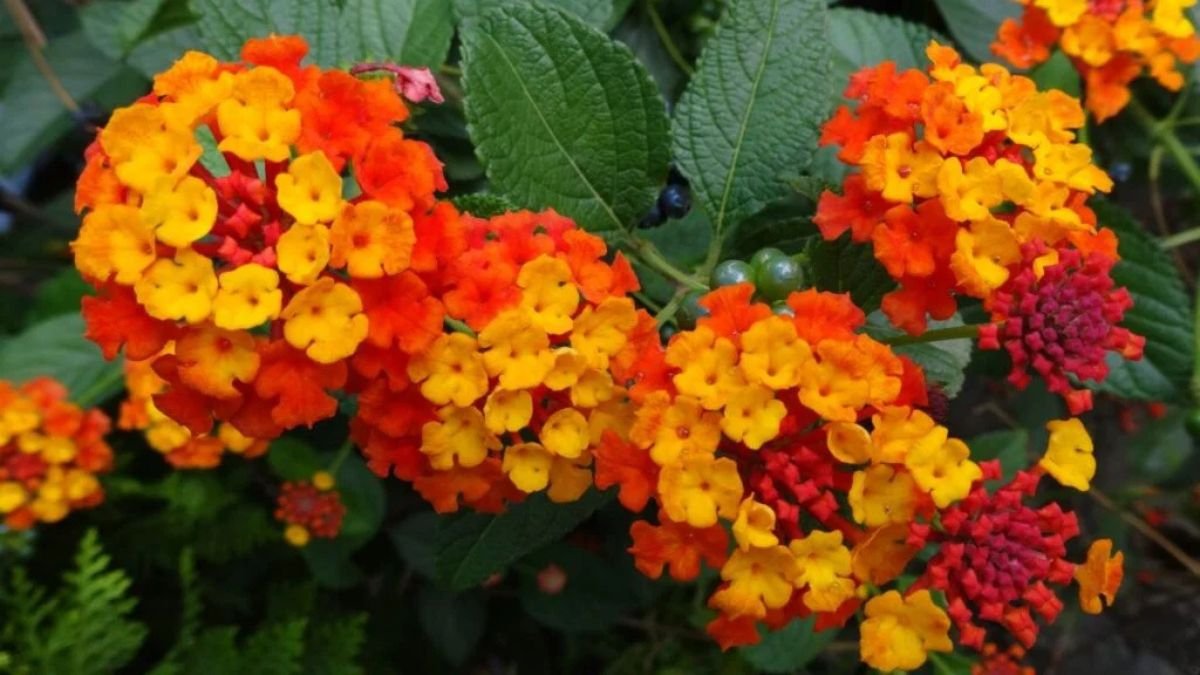Are you tired of spending hours in your garden only to see flowers fade too soon? Do you dream of a vibrant, colorful space that blooms from spring through fall without constant replanting? You’re not alone. Many gardeners struggle to find plants that offer lasting beauty and require minimal effort. The good news? There’s a solution that can transform your garden into a year-round paradise.
Envision stepping outside to a burst of color that lasts for months. Picture perennials that survive and thrive, bringing life to your garden with minimal upkeep. From the bold hues of dahlias to the delicate charm of balloon flowers, these 16 colorful perennials are here to make your gardening dreams a reality.
Are you willing to create a garden that wows from the first spring bud to the last fall bloom? Let’s dig into these 15 colorful perennial flowers, which promise beauty, resilience, and endless color.
15 Gorgeous Colorful Perennial Flowers for Non-Stop Bloom
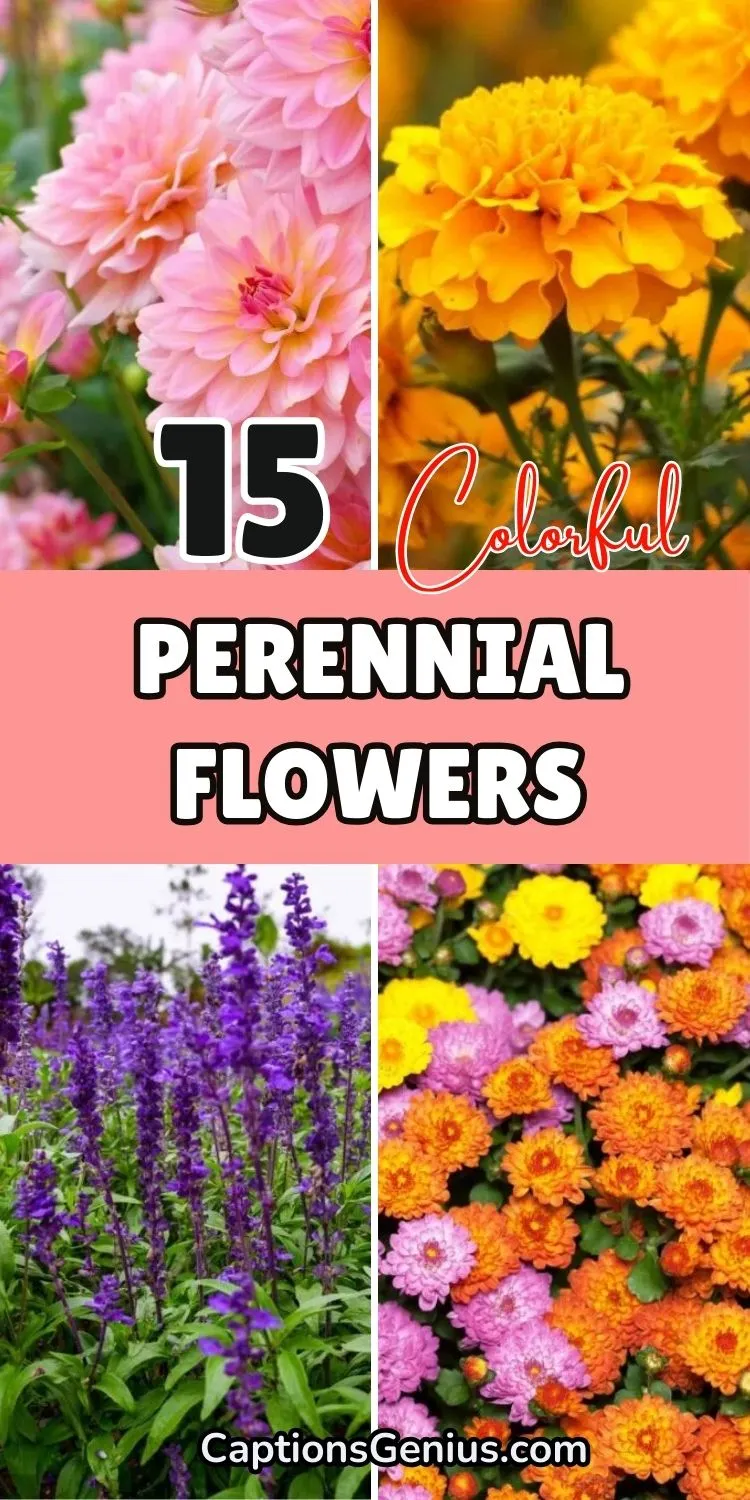
1. Hydrangeas
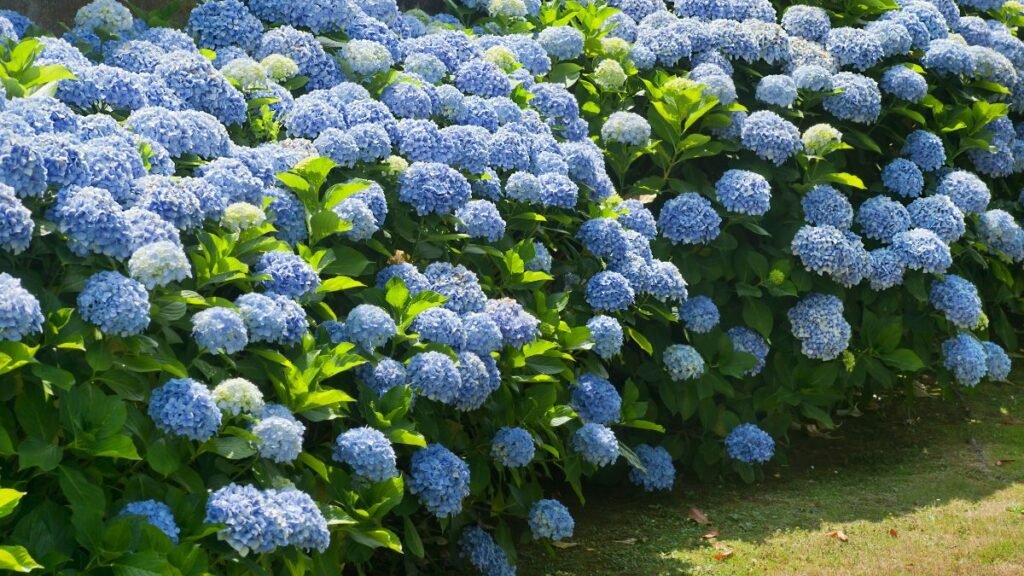
Hydrangeas are known for their stunning ability to shift colors throughout the growing season. The blooms can transition from pink to blue or even purple, depending on the soil’s pH levels. Acidic soils tend to produce blue flowers, while alkaline soils lean toward pink. This unique trait makes them a favorite among gardeners who enjoy a dynamic display.
Aluminum availability in the soil plays a key role in color changes. When aluminum is present in acidic soil, it binds to the flower pigments, creating blue hues. Gardeners can manipulate this by adding lime to raise the pH or sulfur to lower it.
These hardy perennials thrive in partial shade and require consistent moisture. Their large, clustered blooms make them a standout in any garden. With proper care, hydrangeas can bloom from late spring through fall, offering months of vibrant color. Their versatility and seasonal transformations make them a must-have for any perennial garden.
2. Coneflowers
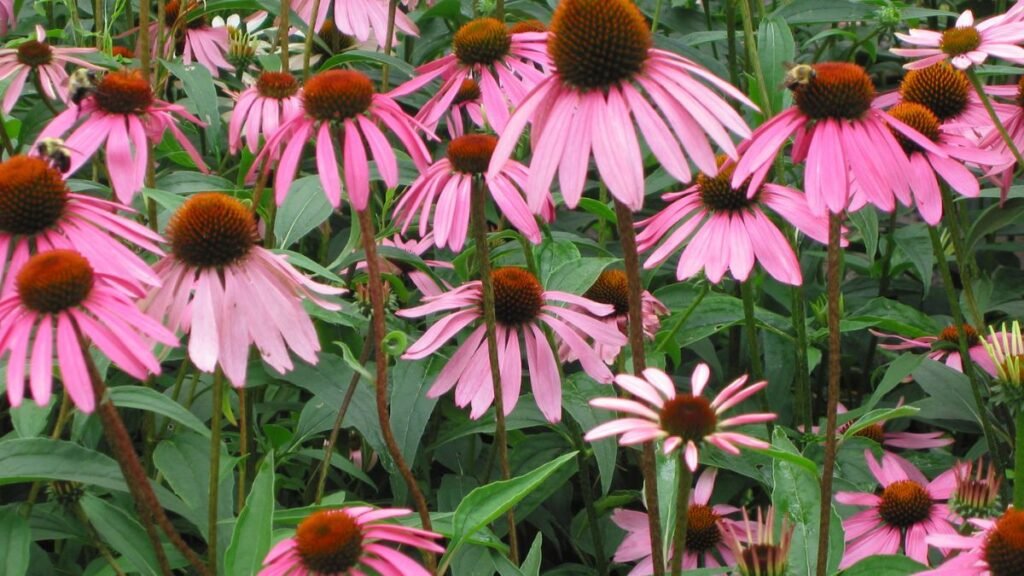
Coneflowers, or echinacea, are a resilient choice for gardens in hot, dry climates. Their daisy-like petals surround a spiky center, creating a striking visual appeal. These flowers are beautiful and incredibly tough, thriving in poor soil and requiring minimal water once established.
Research from the University of Maryland highlights their drought tolerance, noting the deep root systems that allow them to access water far below the surface. This makes them an excellent option for eco-friendly landscaping.
Blooming from early summer to fall, coneflowers attract pollinators like bees and butterflies. They come in a range of colors, including purple, pink, orange, and white, adding variety to any garden. Their long-lasting blooms and low maintenance needs make them a practical yet stunning addition to perennial beds.
3. Bee Balm
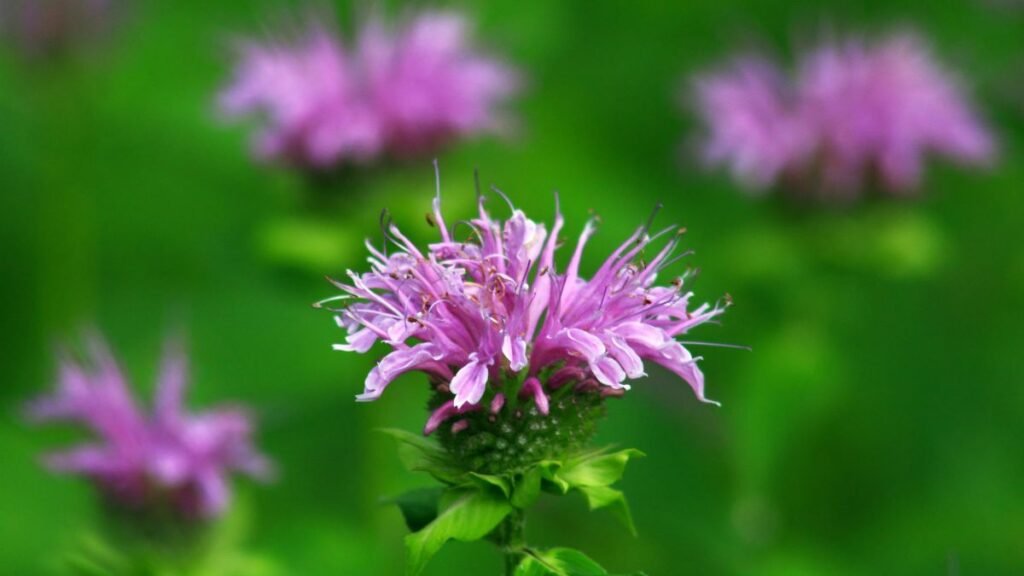
Bee balm, or monarda, is a showy perennial that draws pollinators like bees, butterflies, and hummingbirds. Its tubular flowers, available in shades of red, pink, purple, and white, are rich in nectar, making them a favorite among wildlife.
Bee balm is particularly effective at supporting native pollinator populations. Its long blooming period, from early summer to fall, provides a consistent food source for these beneficial insects and birds.
This plant prefers full sun to partial shade and well-drained soil. It’s also resistant to deer, making it a reliable choice for gardens in rural areas. Beyond its ecological benefits, bee balm adds a burst of color and texture to any landscape. Its aromatic foliage can even be used to make herbal teas, adding another layer of utility to this versatile plant.
4. Daylilies

Daylilies are not just visually appealing; they’re also edible. Their trumpet-shaped blooms come in various colors, from bright yellows and oranges to deep purples and reds. Each flower lasts only a day, but the plant produces so many blooms that it remains vibrant throughout the season.
According to a study in the Journal of Food Science, daylily petals are rich in antioxidants and can be used in salads, soups, or garnishes. Their mild, slightly sweet flavor makes them a unique addition to culinary creations.
These perennials are incredibly low-maintenance, thriving in a variety of soil types and light conditions. They’re also drought-tolerant once established, making them a practical choice for busy gardeners. With their dual role as both ornamental and edible plants, daylilies are a versatile addition to any garden.
5. Astilbe
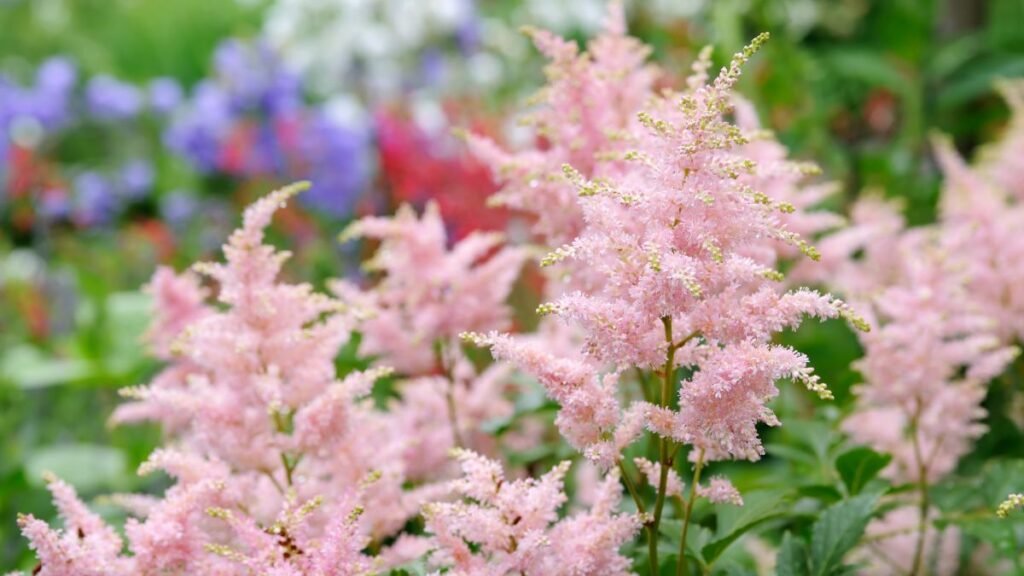
Astilbe is a shade-loving perennial that brings life to darker areas of the garden. Its feathery plumes of flowers come in shades of pink, red, white, and lavender, creating a soft, elegant look. These blooms rise above fern-like foliage, adding texture and depth to shaded spaces.
Cornell University emphasizes Astilbe’s ability to thrive in low-light conditions, making it a top choice for woodland gardens or shaded borders. The study also notes its resistance to most pests and diseases, further enhancing its appeal.
Blooming from late spring to early fall, astilbe requires moist, well-drained soil to flourish. It’s an excellent companion for hostas and ferns, creating a lush, layered effect in shaded gardens. With its graceful appearance and adaptability, Astilbe is a reliable way to add color and interest to areas where other plants might struggle.
6. Coreopsis
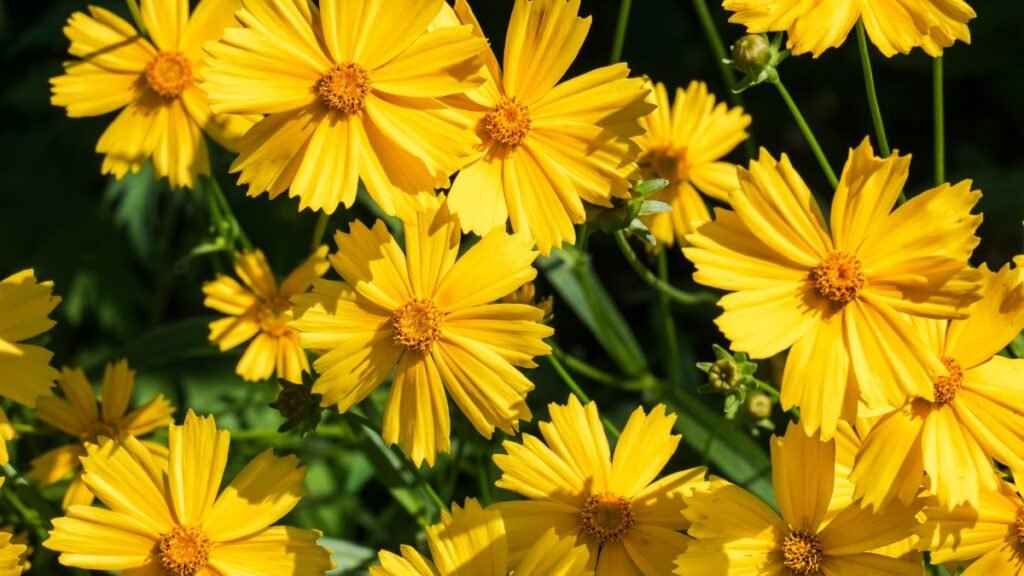
Coreopsis, often called tickseed, is a champion of long-lasting blooms. From early spring to late fall, its cheerful yellow, orange, or red flowers brighten gardens with minimal effort. This hardy perennial thrives in full sun and well-drained soil, making it a reliable choice for gardeners seeking consistent color.
Pollinators like bees and butterflies are drawn to its nectar-rich blooms, making it a valuable addition to eco-friendly landscapes. Coreopsis also requires little maintenance, with deadheading encouraging even more flowers. Its ability to bloom for months on end, combined with its resilience, makes it a standout choice for gardens that need a burst of enduring color.
7. Marigolds
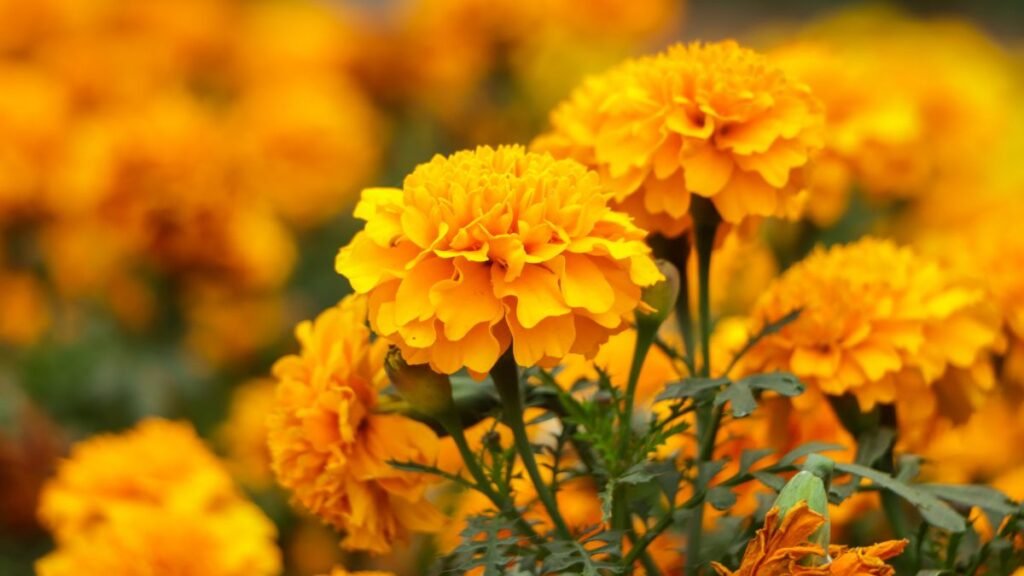
Marigolds are more than just vibrant flowers; they’re natural pest deterrents. Their bright orange, yellow, and red blooms add warmth to gardens while repelling nematodes, aphids, and even rabbits. Planting them alongside vegetables or other flowers can create a protective barrier.
These hardy annuals thrive in full sun and well-drained soil, blooming from late spring until the first frost. They’re easy to grow from seed and require minimal care, making them a favorite for both beginners and experienced gardeners. With their dual role as beautifiers and protectors, marigolds are a practical and colorful addition to any garden.
8. Balloon Flowers
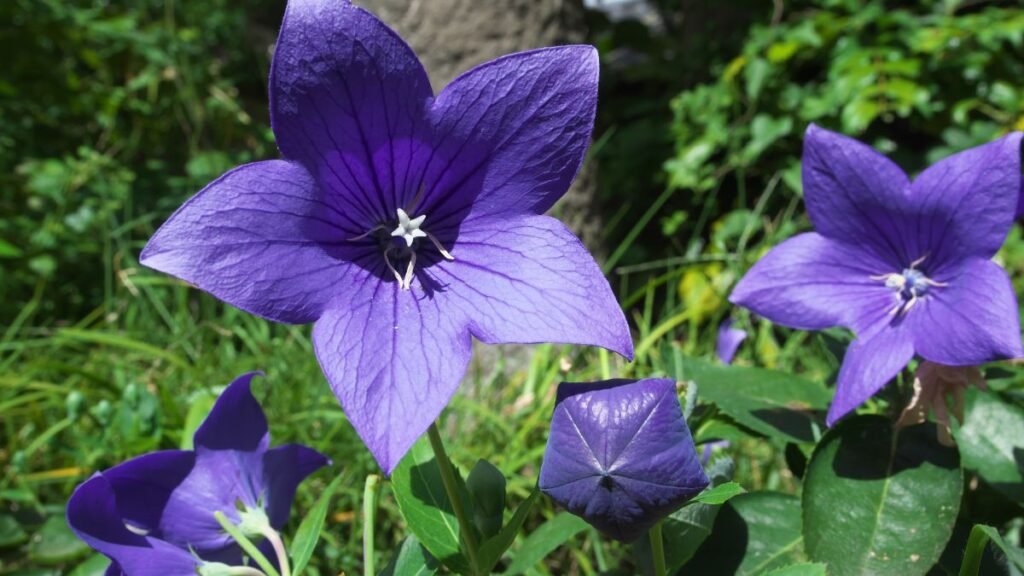
Balloon flowers get their name from their distinctive buds, which puff up like tiny balloons before opening into star-shaped blooms. Available in shades of blue, pink, and white, these perennials add a whimsical touch to gardens.
Blooming from early summer to fall, balloon flowers attract pollinators like bees and butterflies. Their compact growth habit makes them suitable for borders, containers, or rock gardens. With their unique appearance and long blooming period, they’re a delightful way to add charm and color to any landscape.
9. Sedum
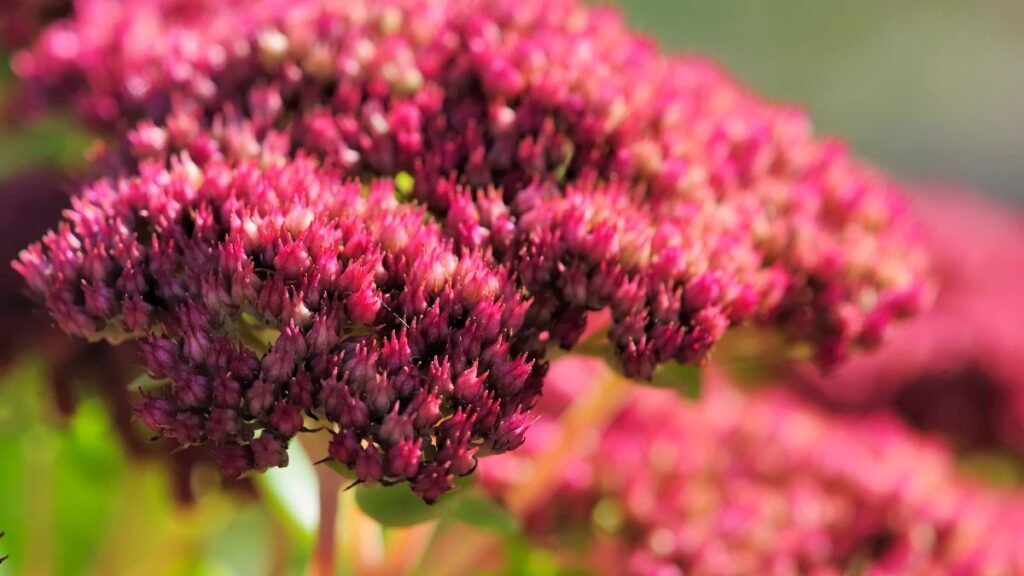
Sedum, also known as stonecrop, is a succulent perennial that thrives in tough conditions. Its fleshy leaves store water, allowing it to withstand drought and poor soil. From creeping ground covers to upright varieties, sedum offers a range of textures and colors.
Research from the University of California highlights sedum’s ability to improve soil health by preventing erosion and supporting beneficial insects. Its star-shaped flowers, which bloom from late summer to fall, attract pollinators like bees and butterflies.
This plant requires little care, making it ideal for busy gardeners or those with less-than-ideal growing conditions. Whether used in rock gardens, borders, or green roofs, sedum adds structure and interest with minimal effort. Its resilience and versatility make it a standout choice for low-maintenance landscapes.
10. Blanket Flowers

Blanket flowers, or gaillardia, are known for their vibrant, daisy-like blooms in shades of red, orange, and yellow. These perennials are incredibly hardy, thriving in poor, sandy, or rocky soils where other plants struggle.
Blooming from early summer to fall, they attract pollinators like bees and butterflies. Their long-lasting flowers and low maintenance needs make them a practical yet stunning addition to any garden. Whether planted en masse or as accents, blanket flowers bring a burst of color and resilience to challenging growing conditions.
11. Heuchera (Coral Bells)
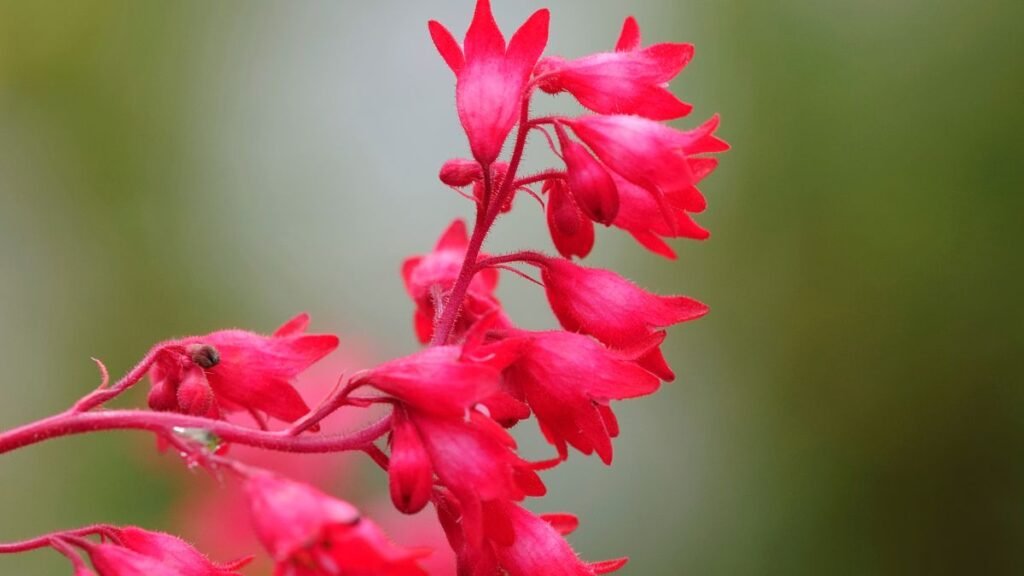
Heuchera, commonly known as coral bells, is prized for its vibrant foliage rather than its delicate flowers. The leaves come in a stunning array of colors, including deep purple, lime green, and fiery orange, adding year-round interest to gardens.
While the tiny bell-shaped flowers attract hummingbirds and pollinators, it’s the foliage that steals the show. Heuchera is also low-maintenance, requiring well-drained soil and occasional watering. Its ability to thrive in challenging conditions and provide consistent color makes it a favorite among gardeners looking for both beauty and resilience.
12. Salvia

Salvia is a powerhouse perennial known for its long blooming season and vibrant spikes of flowers. Available in shades of blue, purple, red, and white, it adds vertical interest and color to gardens from spring through fall.
Research from Colorado State University emphasizes salvia’s drought tolerance and ability to thrive in poor soil. Its nectar-rich blooms are a magnet for bees, butterflies, and hummingbirds, making it an excellent choice for pollinator-friendly gardens.
This plant prefers full sun and well-drained soil, requiring minimal care once established. Deadheading spent flowers encourages continuous blooming, ensuring a steady display of color. With its hardiness and ecological benefits, salvia is a reliable way to keep gardens lively throughout the growing season.
13. Siberian Iris
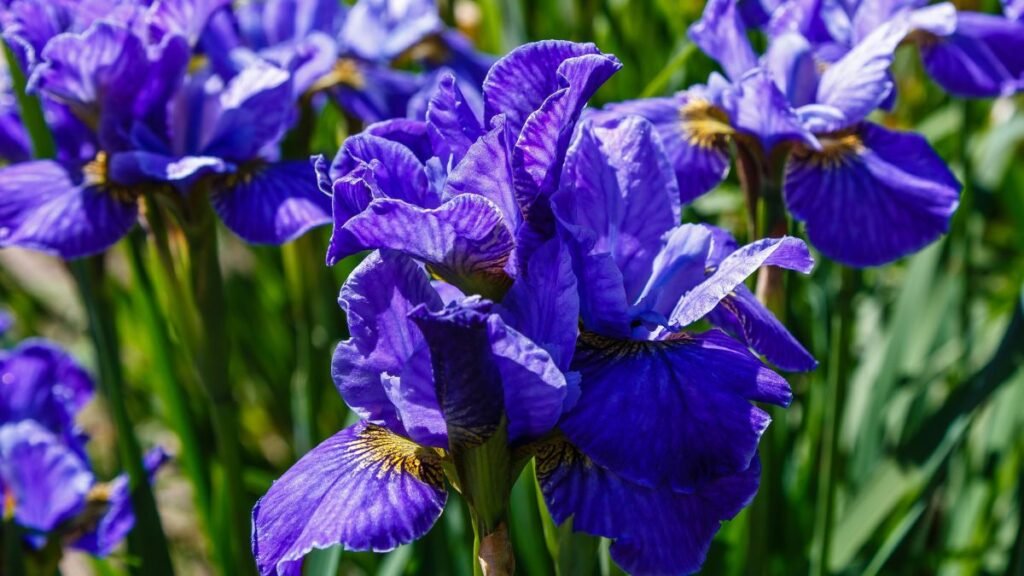
Siberian iris is a tough perennial that thrives in cold climates, making it a favorite for northern gardeners. Its elegant, slender petals come in shades of blue, purple, white, and yellow, adding a touch of sophistication to any garden. This resilience makes it a reliable choice for regions with harsh winters.
Blooming in late spring to early summer, Siberian irises prefer moist, well-drained soil and full sun to partial shade. Its grass-like foliage remains attractive even after the flowers fade, providing structure and texture. With its beauty and hardiness, this iris is a standout for gardens in challenging climates.
14. Lantana

Lantana is a tropical perennial that thrives in hot, sunny conditions. Its clusters of tiny flowers, often in multicolored hues, create a vibrant display from spring until frost. Its nectar-rich blooms attract butterflies and hummingbirds, adding life and movement to the landscape.
This plant prefers well-drained soil and full sun, requiring little maintenance once established. Its trailing habit makes it ideal for containers, hanging baskets, or ground cover. With its bold colors and heat tolerance, lantana is a reliable way to add cheer to sunny spaces.
15. Chrysanthemums
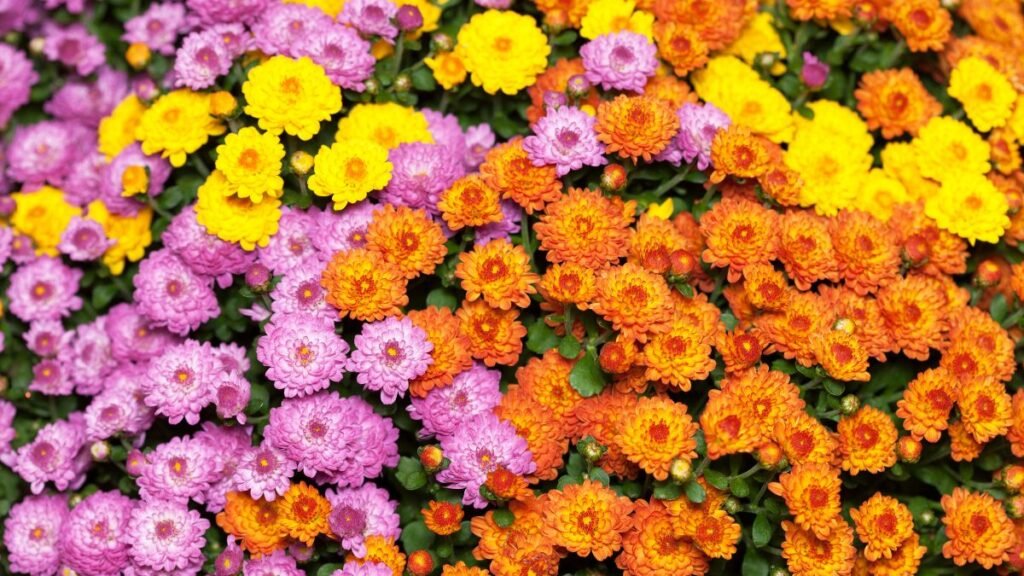
Chrysanthemums, or mums, are the quintessential fall flower, offering a final burst of color as the growing season winds down. Their daisy-like blooms come in a wide range of colors, including yellow, orange, red, and purple. They prefer full sun and well-drained soil, blooming profusely when planted in early summer.
These perennials are also popular for their long-lasting cut flowers, making them a favorite for bouquets and arrangements. With their vibrant hues and seasonal charm, chrysanthemums are a must-have for gardeners looking to extend the beauty of their gardens into fall.
16. Dahlias
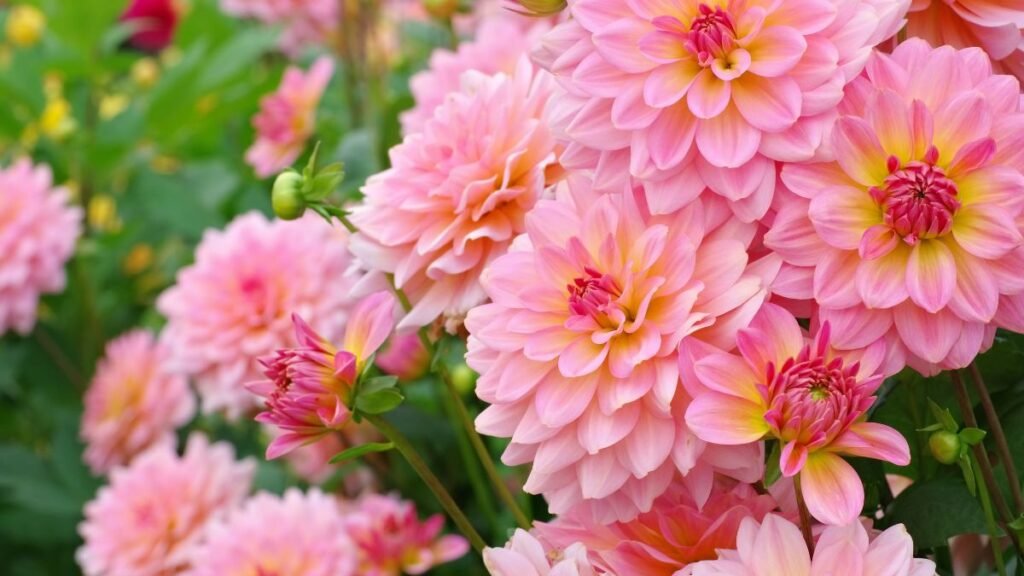
Dahlias are renowned for their dramatic blooms, which range from small pom-poms to dinner-plate-sized flowers. Available in nearly every color imaginable, they add a bold statement to gardens and bouquets alike.
Research from the Royal Horticultural Society emphasizes the long blooming period of dahlias, from midsummer until the first frost. Their intricate petals and vibrant colors make them a favorite for floral arrangements.
These perennials thrive in full sun and well-drained soil, requiring regular watering and staking for taller varieties. While they demand a bit more care, their stunning blooms are well worth the effort. With their versatility and show-stopping beauty, dahlias are a top choice for gardeners and florists alike.

